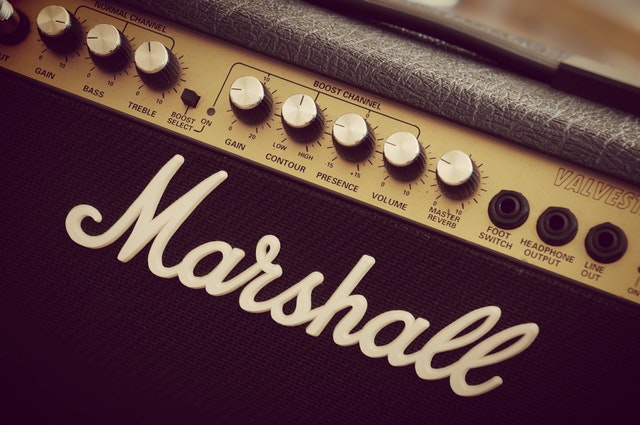
Understanding Your Guitar Amp
If you’re new to the world of electric guitars, you might find your guitar amp to be a bit confusing. What are all those knobs, and what do they do?
The last thing you want is for confusion about your amplifier to distract from your guitar practice. That’s why we’ve put together a guide to help you understand the basics of your guitar amplifier’s controls.
What the Heck is Gain?
For beginning guitarists, the gain control (also known as “drive”) is often the source of the most confusion.
You might notice that when you turn the gain knob clockwise, your guitar signal might get louder. So, are gain and volume the same thing? Not at all!
Think of it this way: your gain knob controls the input volume – that’s how loud your guitar’s signal is coming into the amplifier. When you turn it up, it overdrives the preamp, which creates sweet, lovely distortion!
Master Volume
The master volume control will be familiar to just about everyone. It controls the overall volume of your guitar amplifier. Having such a high level of control over your loudness is one of the great things about playing an electric guitar. You can go from “quieter than an acoustic” to “we’re here because we’ve received several noise complaints from your neighbors,” all with the twist of a knob. Fun!
Equalization
Technically, the “equalization” category includes at least two controls, and it can include many more. We’re going to lump them all together because they all play roles in the same function: helping you shape your guitar tone. Here are the basics…
Bass (AKA Low)
Your guitar amp’s bass control allows you to control the amount of low-end rumble that comes through in your guitar tone. Low frequencies give your tone extra thump and a sense of danger, but if you overdo it, they can also sound muddy.
Mid (AKA Midrange, Contour)
Your mid control is where a lot of your guitar’s actual tone lives. Turn it down and you might notice that your guitar sounds scooped, which is a term that describes a tone that is all lows and highs without much in the middle. Turn your mids all the way up, and your guitar might sound like it’s calling you on the phone to ask you to bail it out of jail.
Treble (AKA High)
Your treble control lets you adjust the high-frequency sounds coming out of your guitar amp. This is where you can hear the pick scraping the strings and the sound of your fingers sliding up the neck. Treble sounds give your guitar tone bite and definition, but they can also sound grating if you overdo it.
Guitar Amp Effects
Modern guitar amplifiers often feature a wide array of on-board digital effects. Built-in effects don’t give you as much control over your sound as effects pedals do, but they’re still a ton of fun to play around with.
Some common built-in effects include reverb, delay, chorus, flanger, and compression. For more information on how guitar effects can help you shape your guitar sound, check out our article on effects pedals.
Thanks for Reading!
We hope this guide will help you find the perfect guitar tone. Of course, having excellent tone isn’t everything; you have to be able to play well too. For that, might we recommend guitar lessons?